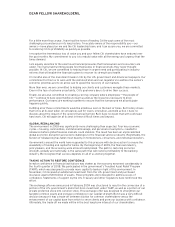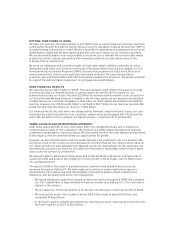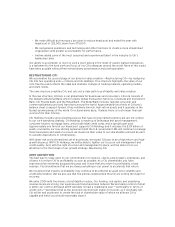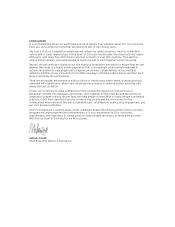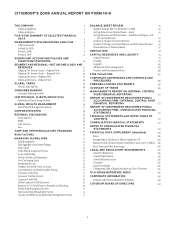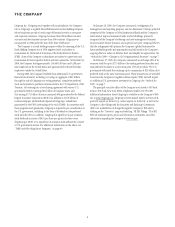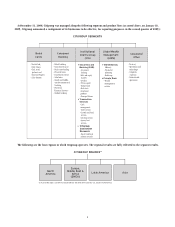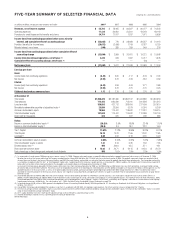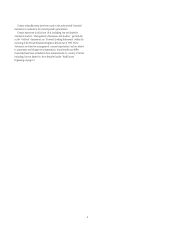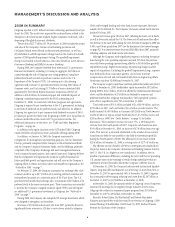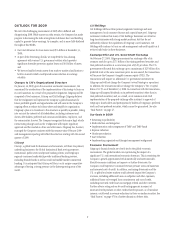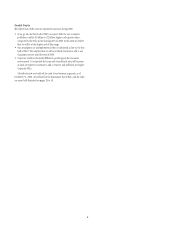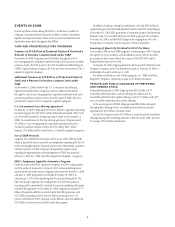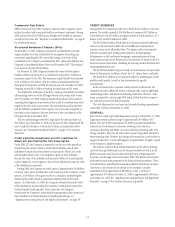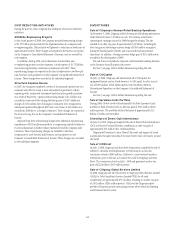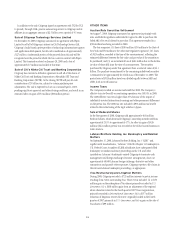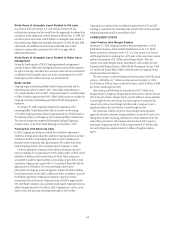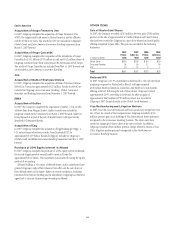Citibank 2008 Annual Report Download - page 13
Download and view the complete annual report
Please find page 13 of the 2008 Citibank annual report below. You can navigate through the pages in the report by either clicking on the pages listed below, or by using the keyword search tool below to find specific information within the annual report.OUTLOOK FOR 2009
We enter the challenging environment of 2009 after a difficult and
disappointing 2008. While numerous risks remain, the Company has made
progress in decreasing the risks arising from its balance sheet and building
capital to generate future earnings. As examples, and as more fully disclosed
throughout this MD&A:
• Our total allowance for loan losses was $29.6 billion at December 31,
2008;
• As part of the decreasing of risks, we completed the loss-sharing
agreement with various U.S. government entities, which provides
significant downside protection against losses on $301 billion of assets;
and
• We have reclassified certain assets from mark-to-market classification to
held-to-maturity which could provide some reduction in earnings
volatility.
Changes to Citi’s Organizational Structure
On January 16, 2009, given the economic and market environment, Citi
announced the acceleration of the implementation of its strategy to focus on
its core businesses. As a result of its proposed realignment, Citigroup will be
comprised of two businesses, Citicorp and Citi Holdings. Citigroup believes
that the realignment will optimize the Company’s global businesses for
future profitable growth and opportunities and will assist in the Company’s
ongoing efforts to reduce its balance sheet and simplify its organization.
Citigroup’s plan is to transition to this structure as quickly as possible, taking
into account the interests of all stakeholders, including customers and
clients, debt holders, preferred and common stockholders, employees, and
the communities it serves. The Company recognizes that major legal vehicle
restructuring changes such as the realignment will require regulatory
approvals and the resolution of tax and other issues. Citigroup has, however,
managed the Company consistent with this structure since February 2009
and management reporting will reflect this structure starting with the second
quarter of 2009.
Citicorp
Citicorp, a global bank for businesses and consumers, will have two primary
underlying businesses: the Global Institutional Bank serving corporate,
institutional, public sector and private banking clients; and Citigroup’s
regional consumer banks which provide traditional banking services,
including branded cards as well as small and middle market commercial
banking. It is anticipated that Citicorp will focus on its unique competitive
advantage of having a strong presence in the fastest-growing areas of the
world.
Citi Holdings
Citi Holdings will have three primary segments: brokerage and asset
management, local consumer finance and a special asset pool. Citigroup
continues to believe that many of Citi Holdings’ businesses are attractive
long-term businesses with strong market positions, but they do not
sufficiently enhance the capabilities of Citigroup’s core businesses. Citi
Holdings will continue to focus on risk management and credit quality as it
seeks to build value in these businesses.
Exchange Offer and U.S. Government Exchange
On February 27, 2009, Citigroup announced an exchange offer of its
common stock for up to $27.5 billion of its existing preferred securities and
trust preferred securities at a conversion price of $3.25 per share. The U.S.
government will match this exchange up to a maximum of $25 billion of its
preferred stock at the same conversion price. As announced, the transactions
will increase the Company’s tangible common equity (TCE). The
transactions will require no additional U.S. government investment in
Citigroup and will not change the Company’s overall strategy or operations.
In addition, the transactions will not change the Company’s Tier 1 Capital
Ratio of 11.9% as of December 31, 2008. In connection with the transactions,
Citigroup will suspend dividends on its preferred securities (other than its
trust preferred securities) and, as a result, on its common stock. Full
implementation of the proposed exchange offer is subject to approval of
Citigroup’s shareholders and participation by holders of Citigroup’s preferred
stock and trust preferred securities, which cannot be guaranteed. See also
“Risk Factors” on page 47.
Our Goals in 2009
• Returning to profitability
• Risk reduction and mitigation
• Implementation and management of TARP and TARP funds
• Expense reduction
• Headcount reduction
• Asset reduction
• Implementing organizational changes/management realignment
Economic Environment
Citigroup’s financial results are closely tied to the global economic
environment. The global markets are experiencing the impact of a
significant U.S. and international economic downturn. This is restricting the
Company’s growth opportunities both domestically and internationally.
Should economic conditions not improve or further deteriorate, the
Company could experience continued revenue pressure across its businesses
and increased costs of credit. In addition, continuing deterioration of the
U.S. or global real estate markets could adversely impact the Company’s
revenues, including additional losses on subprime and other exposures,
additional losses on leveraged loan commitments and cost of credit,
including increased credit losses in mortgage-related and other activities.
Further adverse rating actions by credit rating agencies in respect of
structured credit products or other credit-related exposures, or of monoline
insurers, could result in revenue reductions in those or similar securities. See
“Risk Factors” on page 47 for a further discussion of these risks.
7


